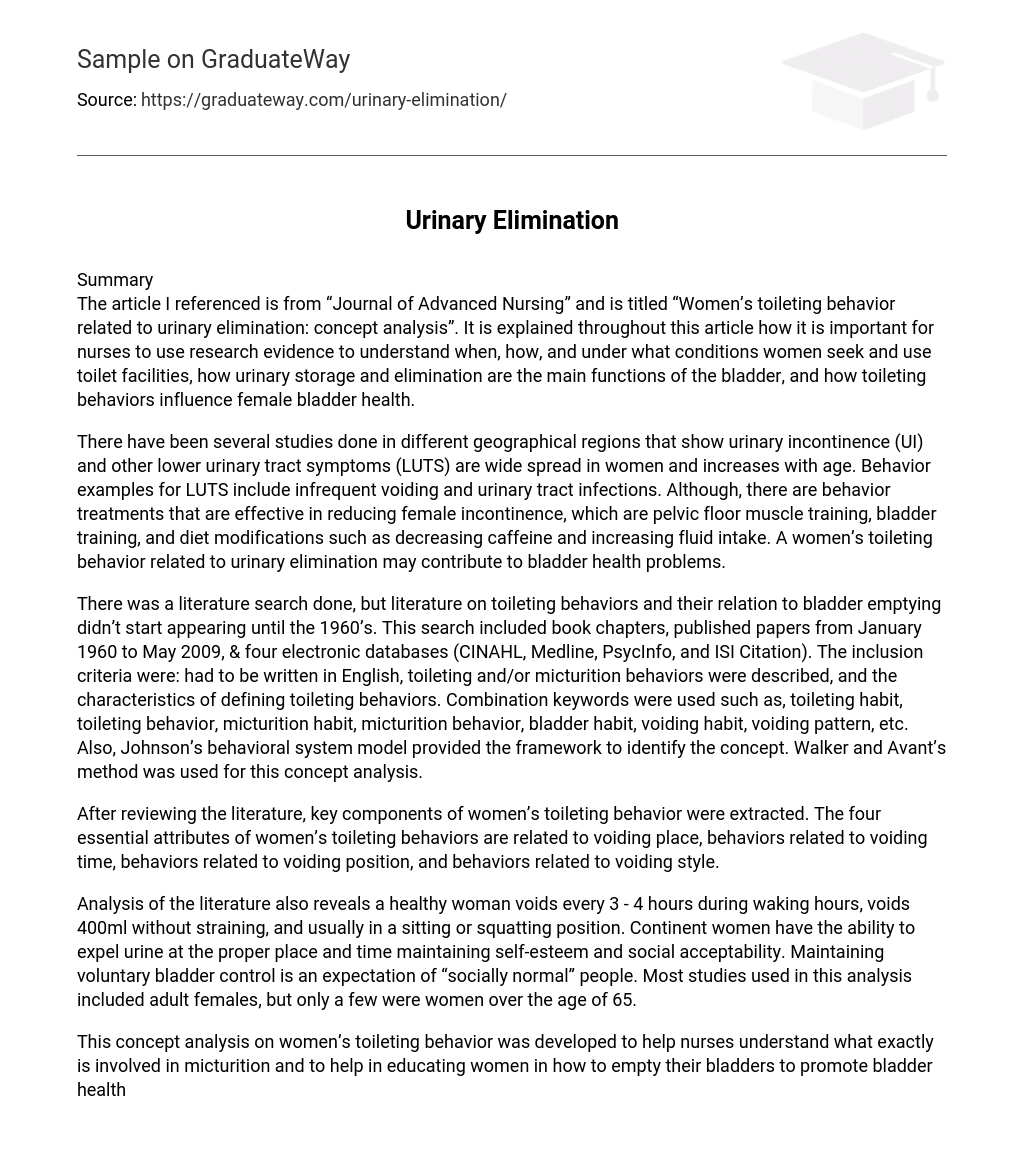Summary
The article I referenced is from “Journal of Advanced Nursing” and is titled “Women’s toileting behavior related to urinary elimination: concept analysis”. It is explained throughout this article how it is important for nurses to use research evidence to understand when, how, and under what conditions women seek and use toilet facilities, how urinary storage and elimination are the main functions of the bladder, and how toileting behaviors influence female bladder health.
There have been several studies done in different geographical regions that show urinary incontinence (UI) and other lower urinary tract symptoms (LUTS) are wide spread in women and increases with age. Behavior examples for LUTS include infrequent voiding and urinary tract infections. Although, there are behavior treatments that are effective in reducing female incontinence, which are pelvic floor muscle training, bladder training, and diet modifications such as decreasing caffeine and increasing fluid intake. A women’s toileting behavior related to urinary elimination may contribute to bladder health problems.
There was a literature search done, but literature on toileting behaviors and their relation to bladder emptying didn’t start appearing until the 1960’s. This search included book chapters, published papers from January 1960 to May 2009, & four electronic databases (CINAHL, Medline, PsycInfo, and ISI Citation). The inclusion criteria were: had to be written in English, toileting and/or micturition behaviors were described, and the characteristics of defining toileting behaviors. Combination keywords were used such as, toileting habit, toileting behavior, micturition habit, micturition behavior, bladder habit, voiding habit, voiding pattern, etc. Also, Johnson’s behavioral system model provided the framework to identify the concept. Walker and Avant’s method was used for this concept analysis.
After reviewing the literature, key components of women’s toileting behavior were extracted. The four essential attributes of women’s toileting behaviors are related to voiding place, behaviors related to voiding time, behaviors related to voiding position, and behaviors related to voiding style.
Analysis of the literature also reveals a healthy woman voids every 3 – 4 hours during waking hours, voids 400ml without straining, and usually in a sitting or squatting position. Continent women have the ability to expel urine at the proper place and time maintaining self-esteem and social acceptability. Maintaining voluntary bladder control is an expectation of “socially normal” people. Most studies used in this analysis included adult females, but only a few were women over the age of 65.
This concept analysis on women’s toileting behavior was developed to help nurses understand what exactly is involved in micturition and to help in educating women in how to empty their bladders to promote bladder health. This study also facilitates development of behavioral interventions designed to prevent, eliminate, reduce and manage female lower urinary tract symptoms.
References
Wang, K., & Palmer, M. (2010). Women’s toileting behaviour related to urinary elimination: concept analysis. Journal of Advanced Nursing, 66(8), 1874-1884. doi:10.1111/j.1365-2648.2010.05341.x





